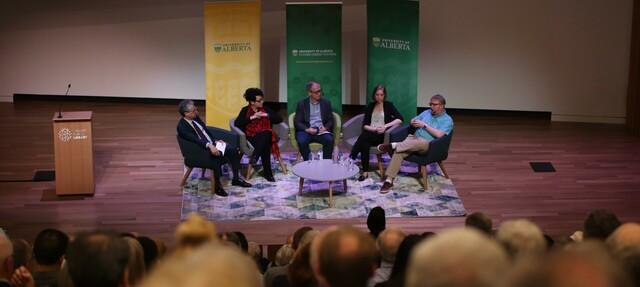A Public Lecture Series

Energy Talks is a speaker series featuring groundbreaking research presented by experts from the University of Alberta's Future Energy Systems research initiative and Energy Systems Signature Area. Energy Talks lectures can be delivered in numerous venues across Canada, in partnership with local host organizations.
If you are interested in hosting an Energy Talks lecture, please contact fescom@ualberta.ca indicating your organization, preferred topic(s), proposed date, and audience. Please note that due to research and teaching obligations, our research group may not be able to accommodate all requests.
Upcoming Dates
Energy Talks - When is a good time to treat?: The economics behind the treatment of Oil Sands Process Water (OSPW) (Sept. 20, 2023)
How much do we know about Oil Sands Process Water? How do economists approach the treatment of polluted water? In this talk, we explore how economists analyze the use of new technologies to treat Oil Sands Process Water (OSPW) in the north of the province. The policies to treat the affected water are yet to be developed, and economists can provide useful insights to analyze the effects of different water quality targets and treatment times. Our results indicate that higher water quality standards would require companies to start the treatment of OSPW sooner, and that companies would benefit to have more time to treat the OSPW.
Jerico Fiestas Flores is a PhD Candidate in Agricultural and Resource Economics at the University of Alberta, and part of Future Energy Systems. He is specializing in non-market valuation, environmental regulation, and experimental economics. He also has experience with impact evaluation and benefit-cost analysis. He has applied this knowledge as a researcher and a public servant in different institutions.